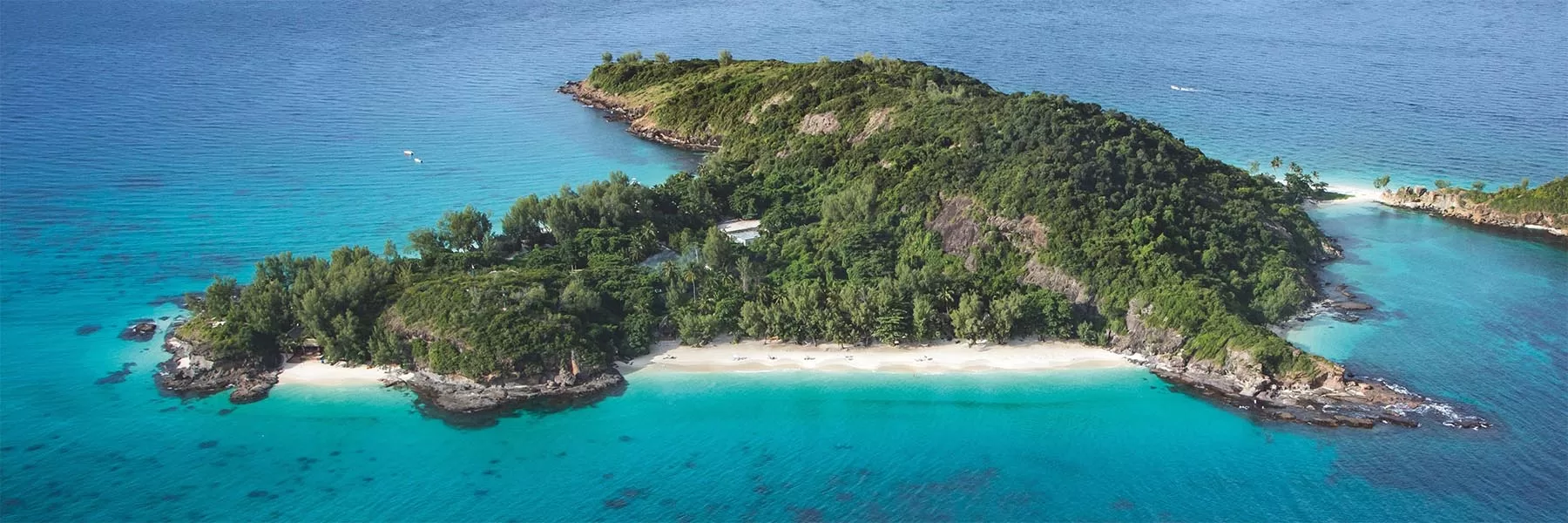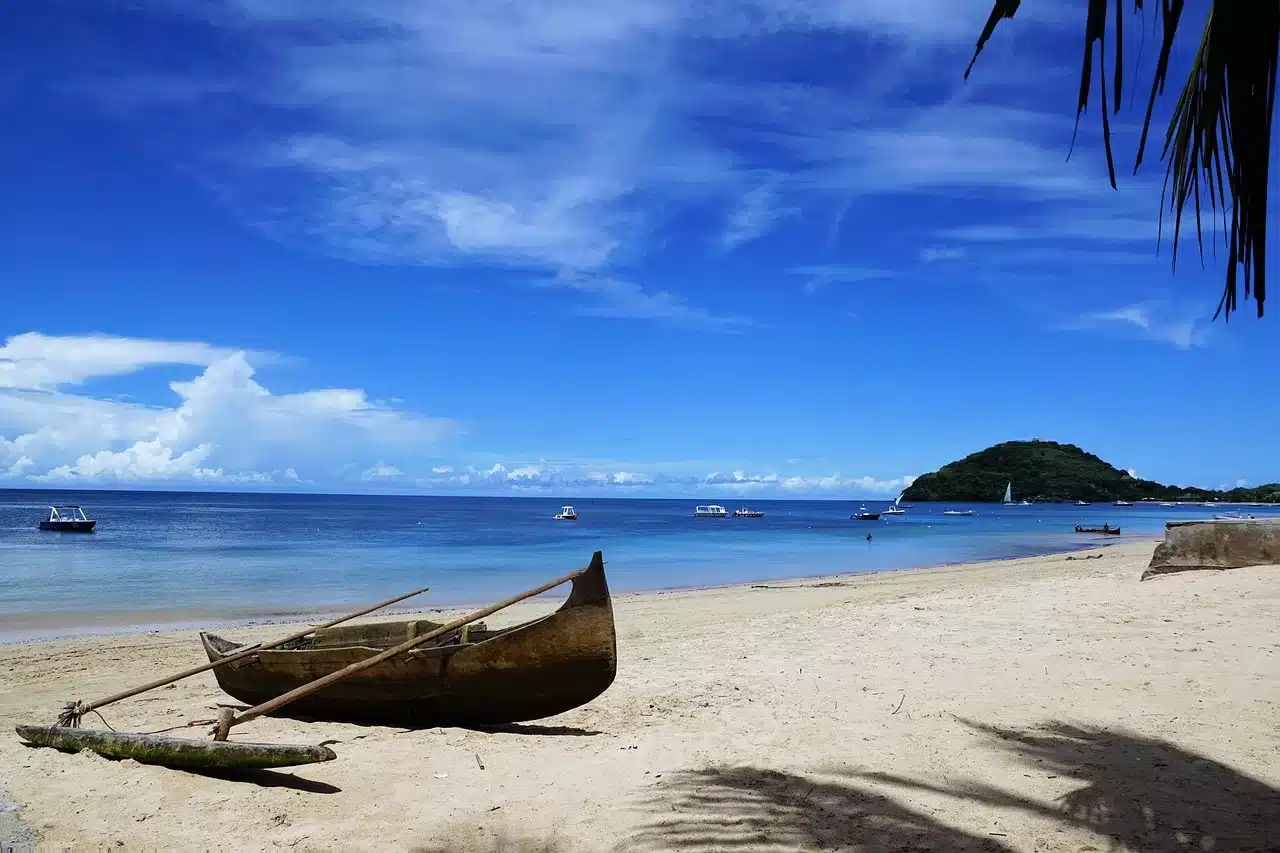Exploring the Enigmatic Islands of Madagascar :-
Located off the eastern coast, Madagascar is approximately the size of France. For a staggering span of 80 million years, Madagascar has been in isolation, earning its esteemed title as the eighth continent—a realm known for its interesting and unique fauna and flora. Let’s embark on a journey to uncover the richness of these islands, where “Islands of Madagascar” isn’t just a phrase, but a promise of extraordinary experiences.
More than a mere treasure trove of biodiversity, Madagascar emerges as an awe-inspiring haven where over ninety per cent of its wildlife boasts exclusivity, defying the norms of the natural world.

One of the spotless beaches of Madagascar
The island’s topography ranges from dense jungles to majestic mountains, stunning beaches, and arid canyons. Diverse species of wildlife and birdlife thrive in its forests, while coastlines lined with ancient baobabs mark the islands. Whether you need a quieter vacation or adventurous water activities, Madagascar caters to everyone. Aside from nature, the capital city of Antananarivo offers a blend of colonial history, modern cuisine, and fine culture.
However, there are dozens of other smaller islands in Madagascar that are worth visiting. Here are the top 7 unique smaller islands in Madagascar:
Nosy Be
Situated off the northwest coast of Madagascar, Nosy Be Island is one of the largest and busiest. It is also one of the main islands of Madagascar, among many others. People often call Nosy Be the island of perfumes due to the scents of ylang-ylang, a tropical tree, spices, and sugar cane. The island overflows with thick forests, volcanic lakes, and exceptional biodiversity. Its forested reserves are home to island birds, lemurs, and unique reptiles.

Nosy Be
Nosy Be’s white-sand beaches and pristine waters are extremely relaxing. Coral reefs protect its shallow waters, making scuba diving and snorkelling safe. Some of the marine life spotted underwater are green turtles, hawksbills, pufferfish, clownfish, and more. Lucky divers can spot dolphins and humpback whales at the right place and time. Lokobe National Park in Nosy Be is perfect for hiking and spotting various species of wildlife.
Nosy Boraha
Hundreds of years ago, Nosy Boraha, also known as Sainte Marie, served as a hideout for pirates. The island’s structure made it perfect for ships to hide. After the French colonists took over during the 19th century, they ruled Nosy Boraha until its independence in 1960. Today, the island is a beautiful tourist destination in Madagascar.

Nosy Boraha
Nosy Boraha has long, palm-sand beaches, rustic lodges, world-class hotels, and tropical rainforests. The whale season on the island offers views of humpback whales filtering between Nosy Boraha and the main island. While sitting leisurely outside of the hotel, tourists can spot the whales as they drift quite close to the shoreline. Along with snorkelling in the secluded bays, tourists can even explore the island’s main hub and laze around near the southern tip of Nosy Boraha.
Nosy Komba
Also known as Nosy Ambariovato, Nosy Komba is a volcanic island. It lies in the northwest, positioned between Nosy Be and mainland Madagascar. Dense vegetation covers the island, and it takes on the shape of a turtle shell. The island consists of various rocks, predominantly slate and granite. These rocks serve as a reminder of the volcanic past and safeguard the island when the waters become rough.

Nosy Komba
Visiting Nosy Komba offers the opportunity to spot varieties of lemurs in their natural habitat. Moreover, tourists can enjoy many activities on the island, such as excursions, hiking mountains, scuba diving, and whale shark watching. The thick forests and clear waters of the island house several endemic species of tropical plant, marine, and animal life.
Nosy Hara
Nosy Hara, or Nosy Hara National Park, is a small, uninhabited limestone islet. It is located off the northwest coast of Madagascar. Brookesia micra, the smallest known chameleon, is found on this islet. Nosy Hara is a lesser-known island that displays rich flora and fauna. As it holds the most exceptional seascapes in the world, Nosy Hara was declared a marine national park in 2012.

Brookesia Micra
The elongated islet is characterised by marine tsingy and gorgeous white sand beaches. Activities to enjoy at Nosy Hara include rock climbing and scuba diving.
Nosy Mitsio
Out of all the islands in the Mitsio archipelago, Nosy Mitsio is the only inhabited island, with the exception of Tsarabanjina, which is now owned by a hotel. Due to its idyllic location, the island has powder-white beaches, aquamarine waters, lush coconut palms, and bountiful marine fauna. As the island lies just 70 kilometres north of Nosy Be, it is only accessible by boat.

Nosy Mitsio
Glimpses of green turtles and bottlenose dolphins are common while diving under the waters of Nosy Mitsio. Moreover, the island has important seabird colonies, with large numbers of tropicbirds and frigatebirds spotted across the archipelago. The island is rural and serves as the perfect place to get away from civilization.
Nosy Iranja
Nosy Iranja, a well-known island in Nosy Be’s archipelago, provides a unique and amazing experience for visitors. It is made up of two smaller islets, which are Nosy Iranja Be and Nosy Iranja Kely. Both islets have beautiful landscapes and pristine blue waters that surround the lagoon. The island has a rich biodiversity, including a tropical forest, marine life, and land fauna and flora. Nosy Iranja is also called Turtle Island, as turtles are frequently seen there.

Nosy Iranja offers a wide variety of activities due to its excellent geographical location. Alongside resting on the beach, tourists can enjoy a dhow cruise, try windsurfing, jet ski rides, snorkelling, and scuba diving into the fish-populated lagoon.
Nosy Magabe
A small island located in Antogil Bay, Nosy Magabe is two kilometres offshore from Maroantsetra. The island’s dense vegetation uncovers hidden coves and large boulders, one of which displays a rusty shipwreck. Nosy Magabe is proudly known as the crown jewel of Antogil Bay due to its rich ecosystem.

Nosy Magabe is a rainforest reserve and sanctuary, protecting the endangered aye aye, the long-fingered lemur. The island is also the best place to see other species of lemurs, such as the brown mouse lemur, the white-fronted brown lemur, and the black and white ruffed lemur. As there is a lack of predators, reptiles and amphibians thrive on the island, including the leaf-tailed gecko, several types of chameleons, and frogs. Nosy Magabe also has a few well-maintained trails, where one leads to the summit of the island while the other ends up near Plage des Hollandais beach.
Biodiversity, Adventure, and Untold Beauty:-
Nestled off the eastern coast of Africa lies a realm of wonder and mystique – the islands of Madagascar. A tapestry woven with natural diversity, cultural fusion, and hidden treasures, these unique islands have captured the imagination of adventurers, biologists, and travelers alike.
Biodiversity Hotspots: A Symphony of Life
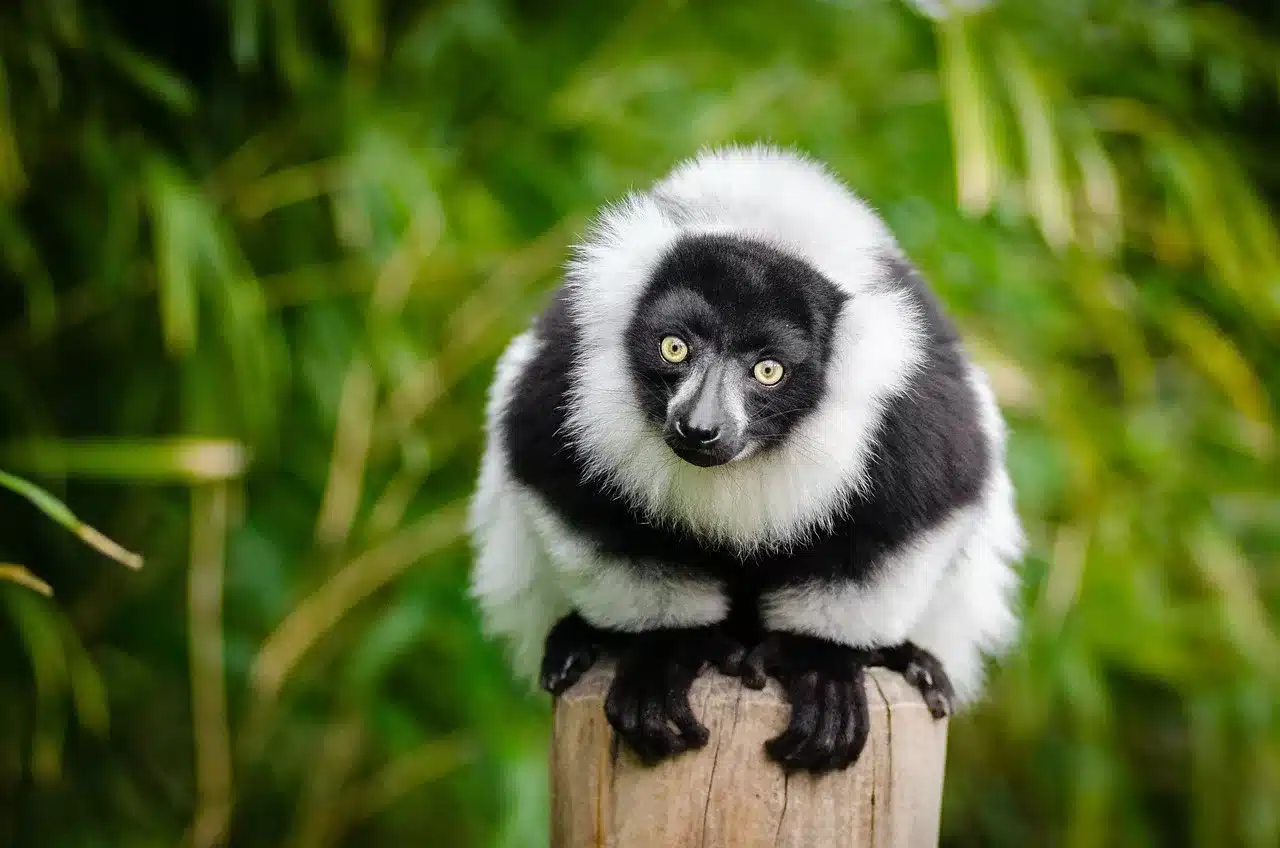
Madagascar’s islands are renowned as biodiversity hotspots, boasting an exceptional array of species found nowhere else on Earth. From elusive lemurs that leap through the trees to chameleons that blend seamlessly with the foliage, this unique ecosystem is a living testament to the power of isolation.
Endemic Species: Unveiling Nature’s Masterpieces
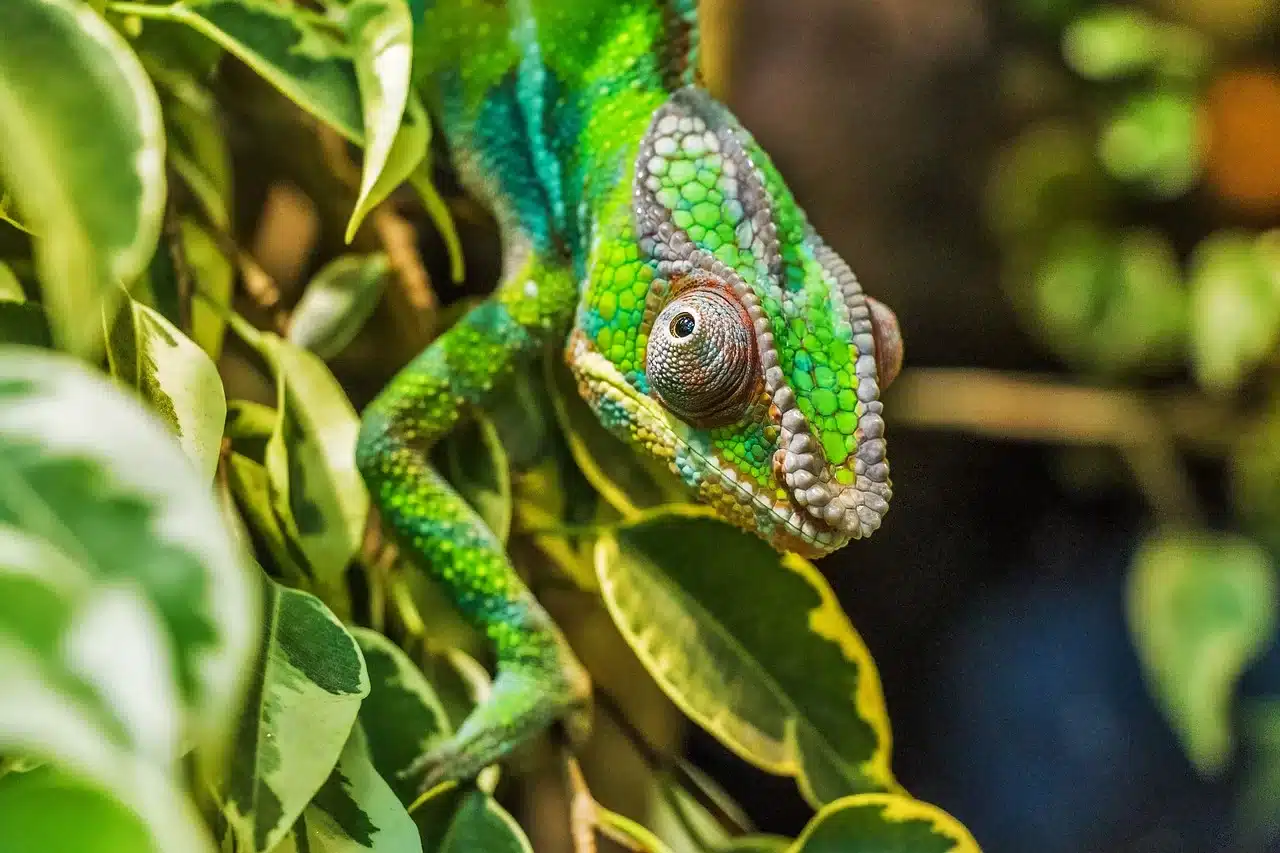
The islands of Madagascar are a living showcase of evolution’s artistry. With approximately 90% of the wildlife being endemic, each creature is a masterpiece of adaptation and survival. Whether it’s the miniature world of mouse lemurs or the mesmerizing hues of panther chameleons, these species are ambassadors of Madagascar’s ecological uniqueness.
Geological Marvels: From Volcanoes to Coastlines
Millions of years of geological transformation have shaped Madagascar’s islands into a diverse tapestry of landscapes. Ancient volcanoes stand as silent sentinels, while dramatic coastlines reveal hidden coves and pristine beaches that seem untouched by time.
Cultural Fusion: Echoes of Isolation
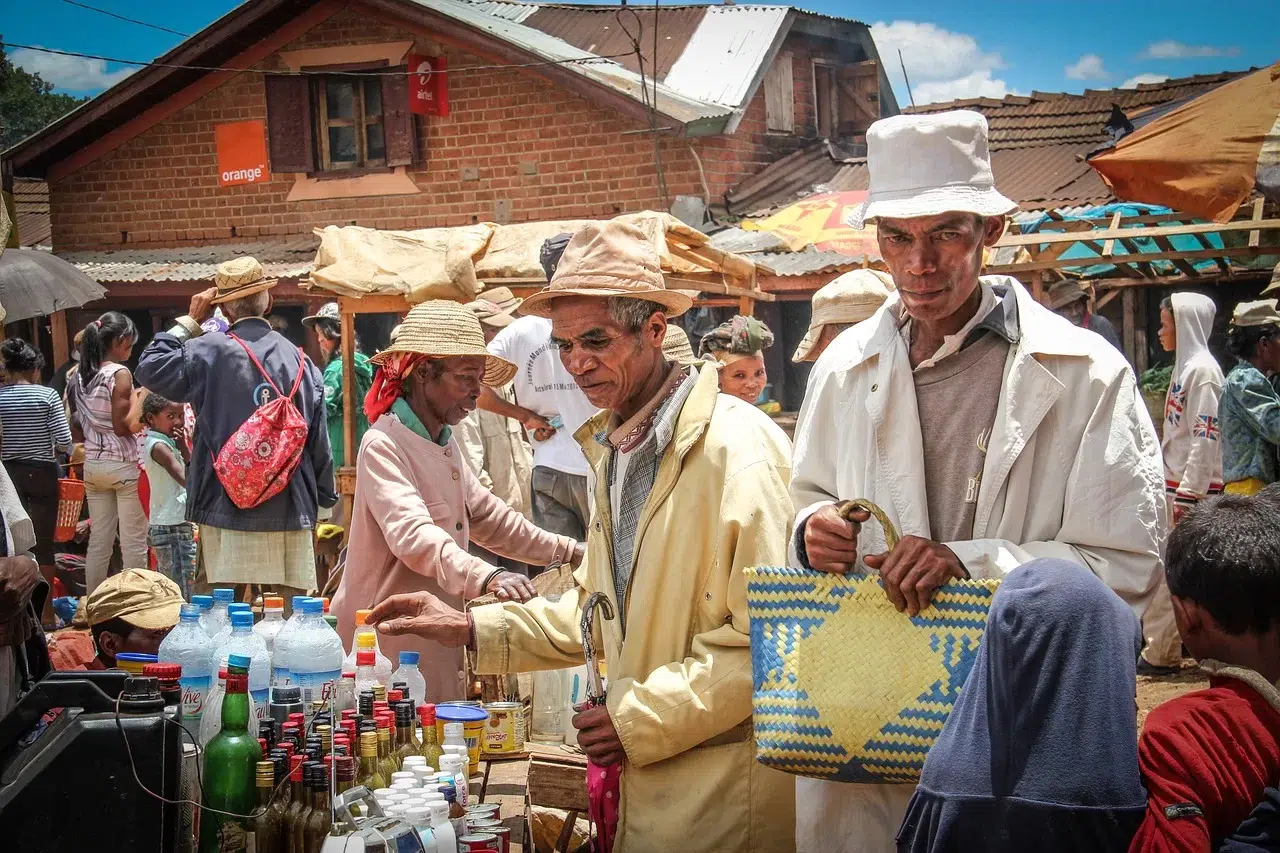
Isolation not only shaped Madagascar’s nature but also its people. The islands are a melting pot of cultural influences, reflecting a blend of African, Asian, and European traditions. Malagasy culture is as diverse as the islands themselves, adding a layer of intrigue to every experience.
Island Hopping Adventures: Discovering Diversity
The art of island hopping reaches new heights in Madagascar. Traverse from the dense jungles of one island to the pristine beaches of another, encountering distinct ecosystems and communities that define each place’s identity.
Hidden Beaches and Coves: Secrets of Solitude
For those seeking tranquility, Madagascar’s islands offer secluded havens of soft sands and azure waters. Each beach is a testament to the beauty of isolation, inviting visitors to unwind in nature’s embrace.
Island Conservation: Guardians of Unique Ecosystems
Preserving the islands’ unique ecosystems is a collective effort. Conservation projects work tirelessly to protect lemurs, birds, and plants that exist nowhere else. Explore the initiatives that ensure Madagascar’s islands remain a haven for generations to come.
Adventure and Recreation: A Playground of Possibilities
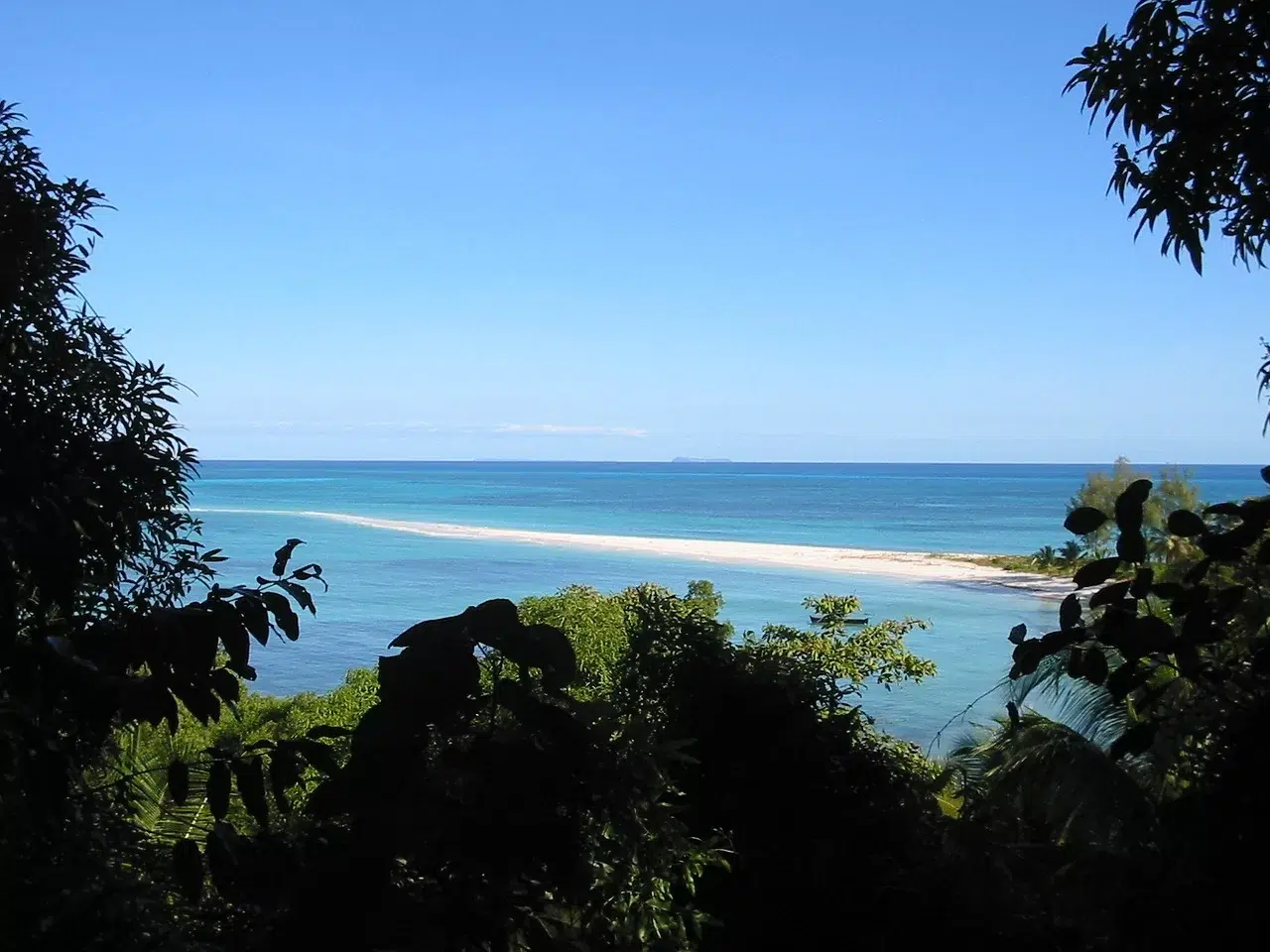
From hiking through lush rainforests to snorkeling in vibrant coral reefs, adventure awaits at every turn. Encounter lemurs in their natural habitat, dive into turquoise waters, and experience Madagascar’s islands in all their wild glory.
Historical Significance: Chronicles of the Past
Madagascar’s islands bear the imprints of history, from pirate hideouts to colonial legacies. Dive into the stories that shaped these islands into the unique tapestry they are today.
Local Cuisine and Traditions: Flavors of Discovery
Savor the tastes of Madagascar’s islands as you explore the local cuisine. From savory dishes made with homegrown spices to traditional rituals passed down through generations, every island has its own culinary story.
Untouched Wilderness: Beyond the Beaten Path
Venture off the well-trodden trails and into the untouched heart of Madagascar’s islands. Discover hidden pockets of wilderness where nature thrives undisturbed, offering a glimpse into a world untouched by time.
As the sun sets on this virtual exploration, one thing becomes clear: the “Islands of Madagascar” are more than a destination; they are a testament to the remarkable beauty that arises from isolation. Each island weaves a narrative of unique experiences, thriving ecosystems, and cultural fusion, leaving an indelible mark on those fortunate enough to visit.
Make sure to include these smaller islands of Madagascar in your bucket list for an ‘out-of-the-way’ travel experience.
If you loved reading this story, then subscribe to our blog here (it will ask to verify your email) to get inspiring travel stories and trivia delivered to your email. Stories about wildlife trivia, cultural experiences, curated luxury hotel lists, underrated places to travel, polar journeys and much more.


